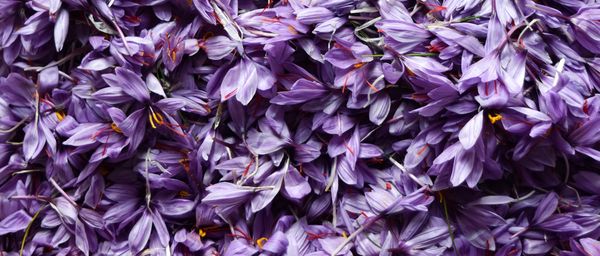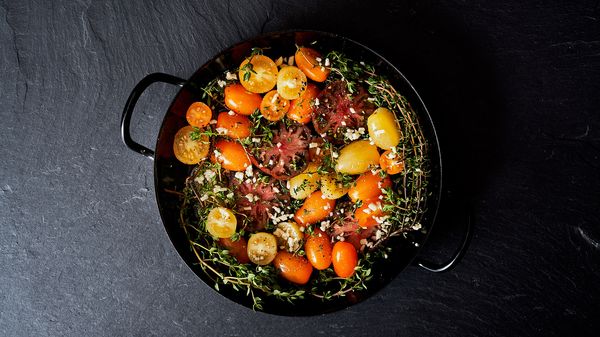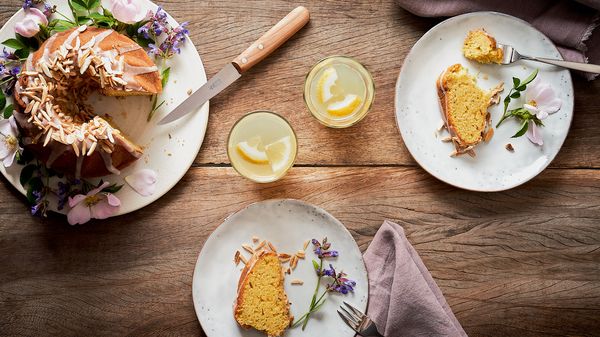When nature has already served up its finest culinary treasures, crocus sativus has its big moment. In places with enough sun and warmth for this perennial crocus variety, it blankets mountainsides with violet flowers overnight. This beautiful spectacle is the starting gun for the saffron harvest in Spain, Italy, Austria, Switzerland, Morocco, Iran, Afghanistan and Kashmir. For 10 days in early november, everything revolves around flower picking, because the exquisite flowers wilt within just two days.

Planted and harvested, all by hand: technological advances don’t stand a chance in saffron farming. Why this delicate and exclusive spice is worth the effort.
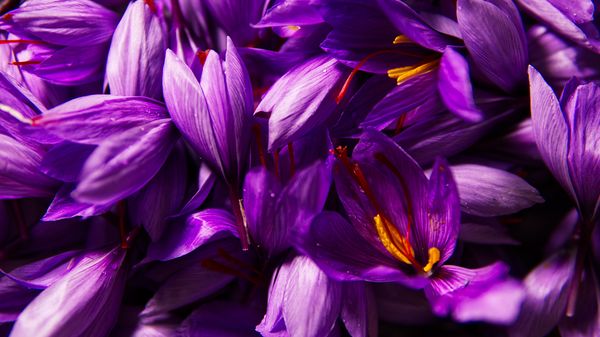
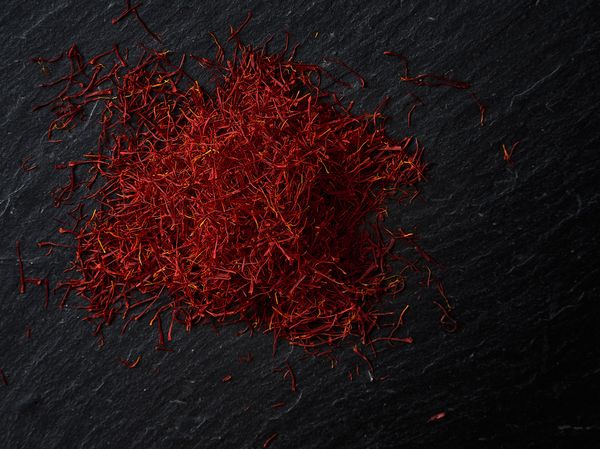
Painstaking craft
During the harvest days, Patrizia Piodella starts to work on her small crocus fields in Canavese before sunrise. “If the sunshine is too intense, it compromises the quality of saffron, so we always pick in the early morning,” the saffron farmer explains. Dozens of people collect the flowers in baskets to prevent crushing. On the day they are plucked, the processing continues. “We sit around a table. Piles of crocus flowers tower above us. Then, we carefully pluck the red stigmas with our fingers from every single flower and dry them straight away.” A single plucker produces 60 g Saffron per day. But this isn’t the only reason for the high market prices that saffron command. Patrizia explains: “The size of the crop is highly dependent on climatic conditions and the quality of the harvest.”
Yellow and yummy
It’s not paella or risotto that have saffron to thank for their appetising hue, but also sweet dishes. The good news for anyone who feels put off by the price: only a tiny amount of the spice is necessary to add colour and aroma to food. An important consideration where flavour is concerned: 0.1 kg of saffron (around 10 threads) is already enough for a dish serving four people. Bear in mind that the flavour subsides if cooked for too long. “Ideally, you should put the saffron threads in a gently heated liquid such as wine or milk. Add this a few minutes before the end of cooking”, Patrizia advises. By the way: as long as saffron is kept airtight and dark, it retains its full spectrum of flavours about one year.
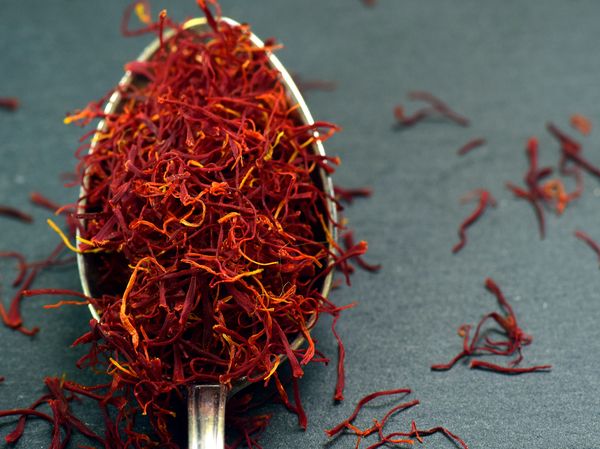
Spice with healing powers
Medical textbooks as long ago as the 14th century noted the healing properties of saffron for ailments such as coughs, intestinal colic and pain in general. Saffron has regularly figured in festive recipes in the Roman empire due to its potency-promoting effects. No wonder: saffron contains a range of active ethereal oils, vitamins B1 and B2. Additionally and secondary nutrients such as flavonoids. Scientific studies have been conducted into the effect on the psyche. The results: saffron steels the nerve, lightens the mood, and relieves the symptoms of post-traumatic stress and the menopause. It’s important to bear one thing in mind, though: saffron should be used sparingly, because 5 g can have narcotic effects and twice this amount of the yellow powder can be fatal.
Beware of fakes
With a gram costing up to €10, it’s no wonder criminals take an interest in the market. They bulk out the genuine item with chilli threads, dried marigold petals, safflower thistles or sandalwood fibres or thin out saffron, including turmeric and paprika powder. An international ISO norm aims to protect against bad counterfeits. This categorises the spice into classes 1 to 4 according to how much of the natural dye crocin it contains. Saffron of the highest quality is classified as level 1, with a crocin value of 190. Spain, known for its particularly aromatic saffron, has an additional norm. If saffron is labelled “coupe” or “La Mancha”, it complies with the highest culinary requirements. Our tip: listen to your senses when buying. Genuine saffron has an unmistakeable smell that is gently spicy, medicinal and smoky. The threads are somewhere between orange and reddish-brown, thin and broaden slightly towards the end.
